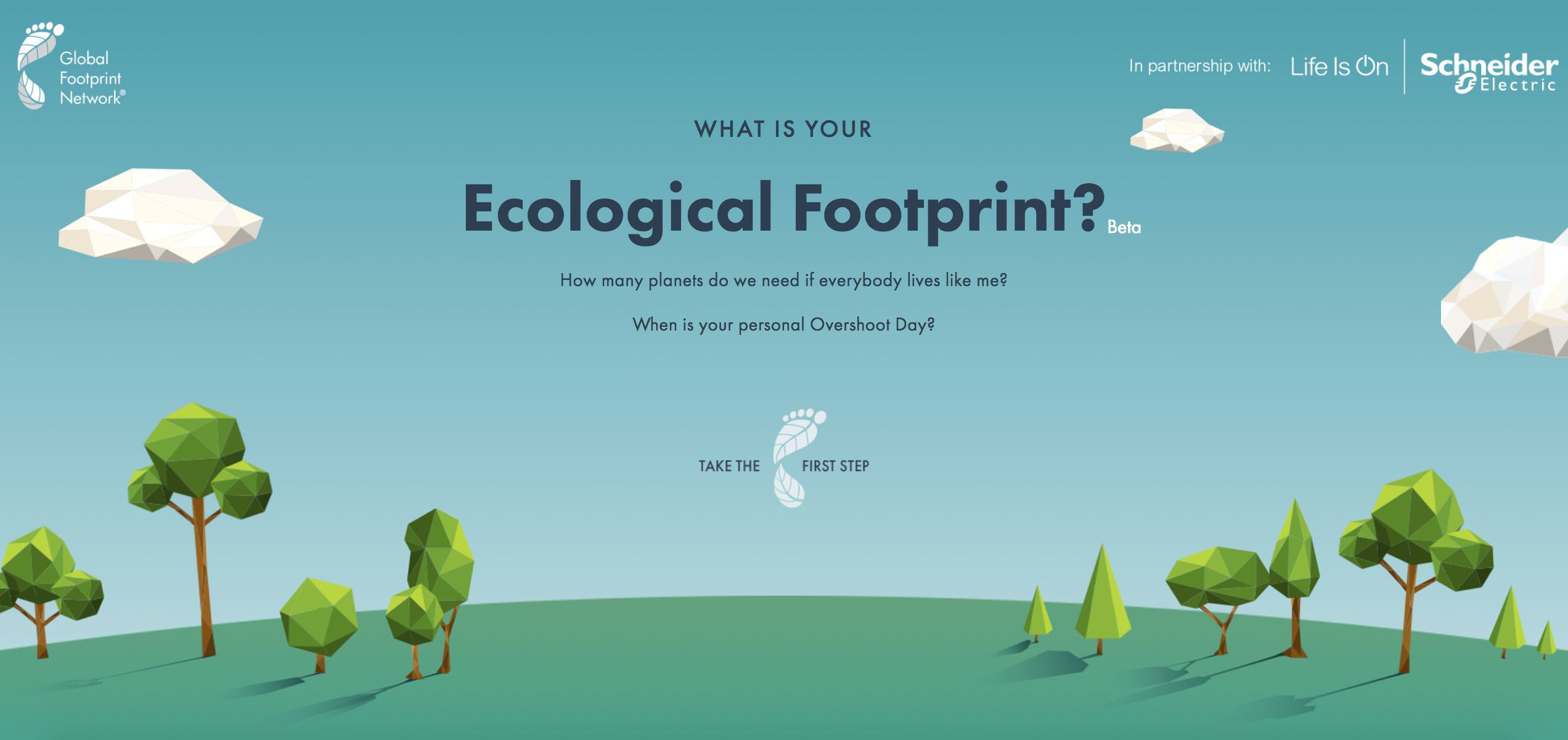deleted by creator
deleted by creator
deleted by creator
Yeah it’s far from perfect, and during the environmental science lecture when we brought up this project we found tons of flaws, but I still think it’s a good ballpark estimate for most people.
I am in no way defending capitalism, but I don’t think why things are produced so unsustainably is relevant to the extent of ecologocal impact, just that they are unsustainable. I also disagree that it’s “blaming” poor people as it never said that it’s the person’s own fault.
deleted by creator
True, but most people don’t have a choice, which is why I personally see the calculator as a reason for people to campaign against unchecked capitalism. It would be nice if they had a written condemnation of the current system.
deleted by creator
They certainly could have made it more clear that the system in most of the world is rigged for unsustainability. I’m honestly thinking about contacting them with suggestions on how this can be made more clear.
deleted by creator
I see it as more of a litmus test: it doesn’t tell you why a solution’s pH is that way, just that it is.
as much as i dislike capitalism myself, it works by the principle of supply and demand, at least to some extent, so if people demand a particular option with no regard of it’s environmental impact and true cost, then yes, companies producing it will trash the environment
if people elect idiots who don’t care about the environment, then the aforementioned companies will trash the environment with no consequences
people, if collected, can exercise absolute control over it’s government in the form of civil resistance to get policy changes, or generating demand for products that align with their world-view
please stop blaming the government and the social-economic system, and start blaming people who don’t give a shit about the environment and act accordingly in the form of consumer demand and exercising electoral power
oh and also
even animal products could be produced ethically and sustainably
this is false by any quantifiable metric
deleted by creator
deleted by creator
i just realized that thanks to some particular vegan subreddits i’ve completely lost my ability to detect sarcasm, so if you could, please clarify if this is simply a joke or are you actually serious
deleted by creator
while writing this comment i went through several stages of emotions: from anger and frustration to calmness and acceptance, scrapping the comment several times
you seem very adamant on your position, and i would guess that this is because you haven’t been exposed to sufficient evidence on the topic or perhaps maybe because you haven’t thought it through properly, i hope my comment helps with that
anyway, here are some interesting statistics followed by studies and reports from which they came
also, i accidentally maxed out the symbols per comment, so it’s going to be separated into two or maybe three comments
-
2,500 gallons of water are needed to produce 1 pound of beef.
-
477 gallons of water are required to produce 1lb. of eggs.
-
900 gallons of water are needed for 1lb. of cheese.
-
1,000 gallons of water are required to produce 1 gallon of milk.
-
“Food Facts: How Much Water Does it Take to Produce…?” Water Education Foundation. (open source)
-
“Water Resources: Agricultural and Environmental Issues”. (open source)
-
“Water”. Environmental Working Group. (open source)
-
“The water footprint of food”. Water for Food. (open source)
-
“A Global Assessment of the Water Footprint of Farm Animal Products. Ecosystems.” (open source)
-
“2,500 gallons all wet? Earth Save: Healthy People Healthy Planet.” (open source)
-
“Water footprint of crop and animal products: a comparison.” (Water Footprint Network) (open source)
-
“Water Content of Things: Data Table 19”. The World’s Water. (open source)
-
“Estimation of the Water Requirement for Beef Production in the United States”. Journal of Animal Science. (open source)
-
Livestock or livestock feed occupies 1/3 of the earth’s ice-free land.
-
Livestock covers 45% of the earth’s total land.
-
1/3 of the planet is desertified, with livestock as the leading driver.
-
Nearly half of the contiguous US is devoted to animal agriculture.
-
“Livestock a major threat to environment. Remedies urgently needed”. FAO Newsroom. (open source)
-
“The Triple Whopper Environmental Impact of Global Meat Production”. Time. (open source)
-
“Livestock and climate change”. Livestock xchange. International Livestock Research Institute. (open source)
-
“Agriculture, Forestry and Other Land Use (AFOLU)”. Intergovernmental Panel on Climate Change. (open source)
-
“The Real Price of Livestock Grazing on America’s Public Lands”. Center for Biological Diversity. (open source)
-
“Major Uses of Land in the United States, 2007”. USDA: Economic Research Service. (open source)
-
“UN launches International Year of Deserts and Desertification”. UN News Centre. (open source)
-
“Saving the World With Livestock? The Allan Savory Approach Examined”. Free from Harm. (open source)
-
“Desertification, Drought Affect One Third of Planet, World’s Poorest People”. United Nations. (open source)
-
“Rearing cattle produces more greenhouse gases than driving cars, UN report warns”. UN News Centre. (open source)
-
“Overgrazing”. Hogan, C Michael. The Encyclopedia of Earth. (open source)
-
Animal agriculture is the leading cause of species extinction, ocean dead zones, water pollution, and habitat destruction.
-
“Biodiversity and Food Choice: A Clarification”. comfortablyunaware: Global Depletion and Food Choice Responsibility. (open source)
-
“Freshwater Depletion: Realities of Choice”. comfortablyunaware: Global Depletion and Food Choice Responsibility. (open source)
-
“What is a dead zone?” National Oceanic and Atmospheric Administration. (open source)
-
“What Causes Ocean ‘Dead Zones’?” Scientific American. (open source)
-
“Nutrient Pollution: The Problem”. Environmental Protection Agency. (open source)
-
“Livestock’s Long Shadow”. Food and Agriculture Organization of The United Nations. (open source)
-
“Causes of Extinction”. The Encyclopedia of Earth. June 13, 2014. Hogan, C Michael. (open source)
-
“The Habitable Planet. Unit 9: Biodiversity Decline// Section 7: Habitat Loss: Causes and Consequences”. (open source)
-
“How Eating Meat Hurts Wildlife and the Planet”. Take Extinction Off Your Plate: a project of the Center for Biological Diversity. (open source)
-
“Impact of habitat loss on species”. WWF Global. (open source)
-
“Biodiversity conservation: The key is reducing meat consumption”. Science of the Total Environment. Machovina, Brian, et al. (open source)
-
“Risk Management Evaluation for Concentrated Animal Feeding Operations”. U.S. Environmental Protection Agency. (open source)
-
“Quantifying Threats to Imperiled Species in the United States”. BioScience. Wilcove, David S, et al. (open source)
-
“Agricultural sustainability and intensive production practices”. Nature 418. Tilman, David, et al. (open source)
-
“Ocean Dead Zones Are Getting Worse Globally Due to Climate Change”. Zielinski, Sarah. Smithsonian.com. (open source)
-
“EPA-supported scientists find average but large Gulf dead zone”. National Oceanic and Atmospheric Administration.(open source)
-
“Ocean Dead Zones Are Getting Worse Globally Due to Climate Change”. Zielinski, Sarah. Smithsonian.com. (open source)
-
Every minute, 7 million pounds of excrement are produced by animals.
-
A mere 2,500 dairy cows produces as much waste as a city of 411,000.
-
130 times more animal waste than human waste is produced in the US.
-
In the U.S. livestock produce 116,000 lbs of waste per second.
-
Animals produce enough waste to cover SF, NYC, Tokyo, etc.
-
“Animal Manure Management”. USDA: Natural Resources Conservation Service. RCA Issue Bief #7. December 1995. (open source)
-
“Agricultural Waste Management Field Handbook”. USDA: Natural Resources Conservation Service. Part 651. (open source)
-
“Agricultural Waste Characteristics”. Agricultural Waste Management Field Handbook. USDA. Chapter 4. (open source)
-
“Risk Assessment Evaluation for Concentrated Animal Feeding Operations”. Environmental Protection Agency. 2004. (open source)
-
“Animal Agriculture: Waste Management Practices”. United States General Accounting Office. July 1999. (open source)
-
“Agricultural Waste Management Field Handbook.” (open source)
-
"US Livestock produce 335 million tons of “dry matter” per year. (open source)
-
We could see fishless oceans by 2048.
-
3/4 of the world’s fisheries are exploited or depleted.
-
90-100 million tons of fish are pulled from our oceans each year.
-
As many as 2.7 trillion animals are pulled from the ocean each year.
-
For 1 pound of fish, up to 5 pounds of unintended species are caught.
-
As many as 650,000 whales, dolphins and seals are killed every year.
-
40-50 million sharks killed in fishing lines and nets.
-
“Impacts of Biodiversity Loss on Ocean Ecosystem Services”. Science. Vol 314. 3 November 2006. Worm, Boris, et al. (open source)
-
“Seafood May Be Gone by 2048, Study Says”. National Geographic News. Roach, John. November 2, 2006 (open source)
-
“Still Waters: The Global Fish Crisis”. National Geographic. Montaigne, Fen. (open source)
-
“World Review of Fisheries and Aquaculture: Part 1”. United Nations Food and Agriculture Organization (open source)
-
“Estimating the Number of Fish Caught in Global Fishing Each Year”. July 2010. Mood, A & Brooke, P. (open source)
-
“Fish count estimates”. Fishcount.org.uk (open source)
-
“Discard and bycatch in Shrimp trawl fisheries”. FAO: Fisheries and Aquaculture Department (open source)
-
“Wasted Catch: Unsolved Problems in U.S. Fisheries”. Oceana. March 2014. Keledjian, Amanda, et al. (open source)
-
“America’s nine most wasteful fisheries named”. The Guardian. 20 March 2014. Goldenberg, Suzanne. (open source)
-
“Shark Fin Trade Myths and Truths: BYCATCH”. Shark Savers (open source)
-
“Sharks at Risk”. Animal Welfare Institute (open source)
-
“100 Million Sharks Killed Every Year, Study Show on Eve of International Conference on Shark Protection”. National Geographic. (open source)
-
“Global catches, exploitation rates, and rebuilding options for sharks”. Marine Policy. (open source)
-
Animal agriculture is responsible for up to 91% of Amazon destruction.
-
1-2 acres of rainforest are cleared every second.
-
Leading cause of rainforest destruction is livestock and feedcrops.
-
Up to 137 plant, animal and insect species are lost every day
-
136 million rainforest acres cleared for animal agriculture.
-
“Causes of Deforestation of the Brazilian Amazon”. World Bank Working Paper. Margulis, Sergio. (open source)
-
“Amazon Deforestation, Once Tames, Comes Roaring Back”. Tabuchi, Hiroko, Rigny, Claire & White, Jeremy. New York Times. (open source)
-
“The Ultimate Mystery Meat: Exposing the Secrets Behind Burger King and Global Meat Production”. Mighty Earth. (open source)
-
“Measuring the Daily Destruction of the World’s Rainforests”. Scientific American. (open source)
-
“10 Rainforest Facts for 2017”. Mongabay.com. January, 2017. Butler, Rhett. (open source)
-
“Keeping Options Alive: The Scientific Basis for Conserving Biodiveristy”. World Resources Institute. (open source)
-
“Tropical Deforestation”. National Aeronautics and Space Administration: Facts (open source)
-
“Cattle Ranching’s Impact on the Rainforest”. Mongabay.com. July 2012.Butler, Rhett. (open source)
-
“Cattle Ranching in the Amazon Rainforest”. UN: Food and Agriculture Oragnization. Veiga, J.B., et al. (open source)
-
“The Disappearing Rainforests”. Save the Amazon.org. (open source)
-
“Protect nature for world economic security, warns UN biodiversity chief”. Vidal, John. The Guardian. (open source)
-
“Amazon Destruction”. Mongabay.com. January 2017. Butler, Rhett. (open source)
-
“Brazilian beef giant announces moratorium on rainforest beef”. Butler, Rhett A. Mongabay. August 2009. (open source)
-
80% of antibiotic sold in the US are for livestock.
-
World population in 1812: 1 billion; 1912: 1.5 billion; 2012: 7 billion.
-
More than 6 million animals are killed for food every hour.
-
Cows drink 45 billion gallons of water & eat 135 billion pounds a day.
-
We are currently growing enough food to feed 10 billion people.
-
“New FDA Number’s Reveal Food Animals Consume Lion’s Share of Antibiotics”. Center for a livable future. December 2010 (open source)
-
“Summary Report on Antimicrobials Sold or Distributed for Use in Food-Producing Animals”. Dept. of Health & Human Services. (open source)
-
“2015 in Review: Animal Antibiotics”. Food Safety News. December 2015. Zuraw, Lydia. (open source)
-
“Human Numbers Through Time”. Nova (open source)
-
“Current World Population”. Worldometers (open source)
-
“Factory Farms”. A Well Fed World (open source)
-
“Strategic Plan 2013-2017: For Kinder, Fairer Farming Worldwide”. Compassion in World Farming (open source)
-
“Animals Slaughtered”. Animals Deserve Absolute Protection Today and Tomorrow (open source)
-
“Based on rough averages of 30 gallons of water & 100 lbs. of food per day x of cows 1.468 billion cows”. (open source)
-
"We Already Grow Enough Food for 10 Billion People…and Still Can’t End Hunger”. Common Dreams: Breaking News & Views. (open source)
-
“U.S. could feed 800 million people with grain that livestock eat, Cornell ecologist advises animal scientists”. Cornell Chronicle. (open source)
-
“Redefining agricultural yields: form tonnes to people nourished per acre”. Environmental Research. (open source)
-
82% of starving children live in countries where food is fed to animals, and eaten by other countries.
-
1.5 acres can produce 37,000 pounds of plant-based food, 1.5 acres can produce only 375 pounds of animal-based food.
-
A person who follows a vegan diet produces the equivalent of 50% less carbon dioxide.
-
Each day, a person who eats a vegan diet saves 1,100 gallons of water, 45 pounds of grain, 30 sq ft of forested land, 20 lbs CO2 equivalent, and one animal’s life.
-
Ten thousand years ago, 99% of biomass (i.e. zoomass) was wild animals. Today, humans and the animals that we
-
Livestock is responsible for 65% of all human-related emissions of nitrous oxide – a greenhouse gas with 296 times the global warming
-
“The World Hunger-Food Choice Connection: A Summary”. Comfortably Unaware Blog. August 2012. Oppenlander, Dr. Richard. (open source)
-
“Improving Child Nutrition: The achievable imperative for global progress”. UNICEF. (open source)
-
“Livestock production index”. The World Bank. (open source)
-
“Global livestock production systems”. Food and Agriculture Organization of the United Nations. (open source)
-
“Food Choice and Sustainability: Why Buying Local, Eating Less Meat, and Taking Baby Steps Won’t Work.” Oppenlander, Richard A. (open source)
-
“Grass-fed and Organic Beef: Production Costs and Breakeven Market Prices, 2008-2009”. Schwab, Denise, et al. (open source)
-
“The carbon foodprint of five diets compared”. Shrink That Footprint (open source)
-
“Dietary greenhouse-gas emissions of meat-eaters, fish-eaters, vegetarians and vegans in the UK”. Scarborough, Peter, et al. (open source)
-
“Facts on Animal Farming and the Environment”. One Green Planet. (open source)
-
“Sustainability of meat-based and plant-based diets and the environment”. The American Journal of Clinical Nutrition. (open source)
-
“The Bomb is Still Ticking…”. Post growth: From bigger towards better. Ede, Sharon. (open source)
-
“Harvesting the Biosphere: The Human Impact”. Smil, Vaclav. (open source)
-
“Population and Development Review 37” (613-636 (December 2011). (open source)
-
“Livestock’ Long Shadow: environmental issues and options”. FAO. Rome. (open source)
-
“Emissions of Greenhouse Gases in the United States”. U.S. Energy Information Administration. (open source)
if you still think that animal agriculture is not a monumental threat to the environment and veganism is not the perfect solution for that then… …i honestly don’t know what could help you at this point, maybe some b12 bruh
-
-
-
deleted by creator
deleted by creator
I use 2.1 Earths!? Sheesh! O.o;
If everybody had the same lifestyle as you. We would need 2.1 earths basically.
deleted by creator
I’m surprised it doesn’t ask whether you have or plan on having children. Seems like that would be a huge part of the carbon footprint.
deleted by creator






